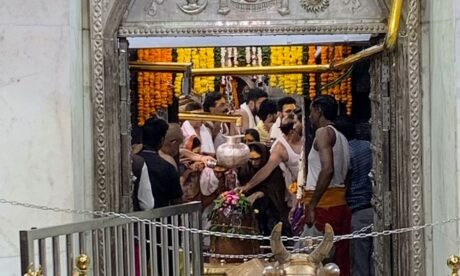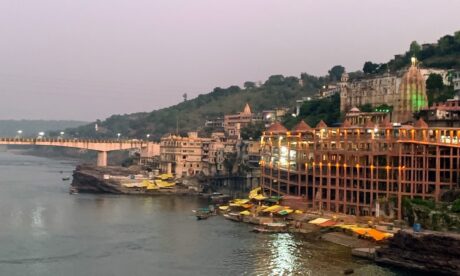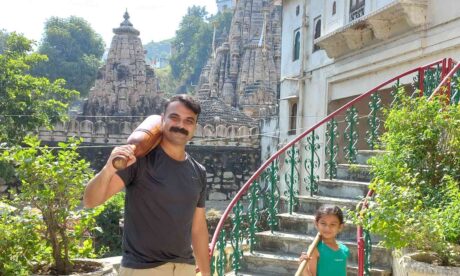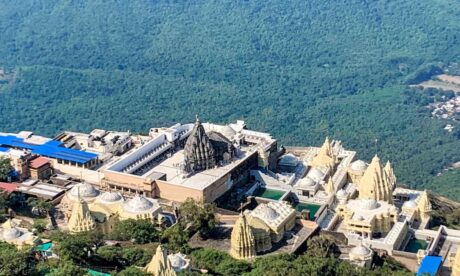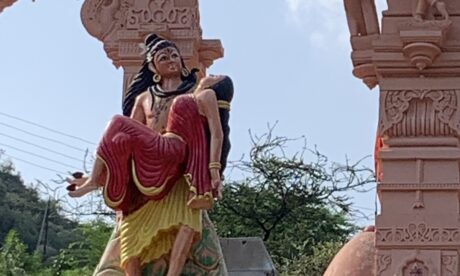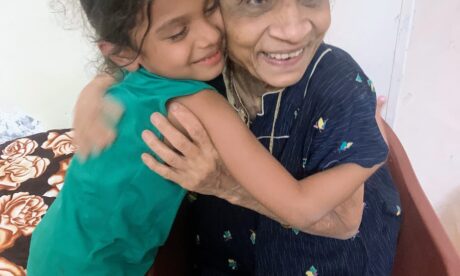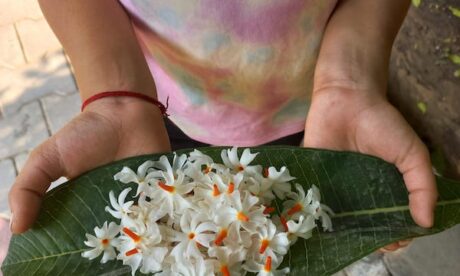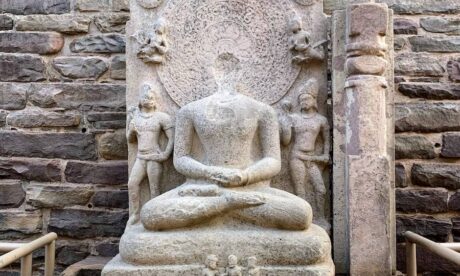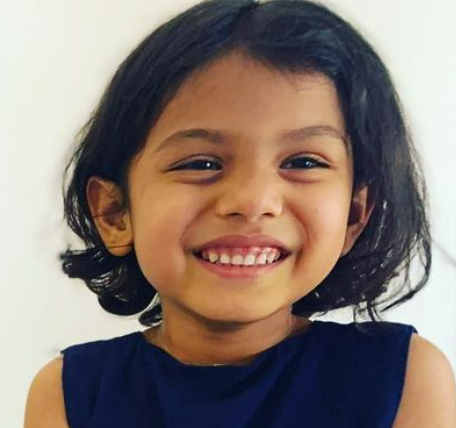
How To Introduce Religion to Children (Age 6)
Co-authored with Ritvvij Parrikh.
Our daughter was six years old when we chose to introduce her to religion in a unique way. We wanted to expose her to India’s diverse religious practices without imposing any specific belief system. Here’s a glimpse into our approach.
India, as you may know, is deeply rooted in its religious and spiritual practices. Despite our protective measures, she had some exposure to religion from a young age:
- She visited temples, especially with grandparents
- She explored temple grounds on long walks
- She watched religious-themed cartoons like The Legend of Hanuman and Swami Ayyappa on streaming platforms
We steered her clear of deep religious rituals and answered her curious questions as best we could, explaining that we would discuss religion in more depth when she was older.
We felt she needed a solid understanding of religion before embracing it, as blind faith without true understanding could be dangerous. We hoped that she would approach religion once she could read, analyze, and engage in meaningful discussions.
We believe that religion can be a tool for self-improvement, understanding, and discipline, rather than a source of fear.
Let’s delve into a few points.
Indic Religions Are Rich and Complex
The difference between what you see versus what it means can be sharp. Without a basic understanding of Indic religions, it is easy to misunderstand them. People tend to:
- Follow the same deity or religion as their parents
- Deeply identify with a single deity or religion.
- Become so immersed in bhakti (devotion) that they stop questioning and simply practice for the sake of practicing.
- Sometimes, their devotion becomes so deep that they stop using religion to improve the human experience.
Principles
Foundational knowledge is essential to understanding Indic religions. Here are some crucial principles:
- Dharma. Indic religions — Hinduism, Buddhism, Sikhism, Jainism — often share foundational Dharmic beliefs, like Karma and Reincarnation. Beyond these, each sect is free to interpret its way of worship.
- No apostasy. As long as you remain Dharmic, you have the freedom to worship and transition between various religious beliefs throughout your life.
- Anything can be God. Anything can represent the divine, from man, woman (Devi or Mata), transgender, ancestors, and animals to nature, showcasing the inclusivity of Indic beliefs.
- Worship of female deities is common. Each village and community has a Kul Devi (family deity).
- You can emulate the Gods. Except for Shakti, Brahma, Vishnu, and Mahesh, most deities were once humans (avatars) who were extremely mindful and achieved greatness during their lifetime.
- The same God has different forms. For example, Shakti Mata is prayed in various forms — Lakshmi, Saraswati, Kali, Durga, Annapurna, Sati, Chandi, Parwati, etc. Similarly, Krishna is prayed as a toddler and an adult.
- Freedom to question. The Indian Gods do not give commandments. You can ask questions and seek answers, much like Arjuna did with Krishna and Parvati did with Shiva.
Religion as Technology
Dharma is not merely theoretical, it is designed to help you live the best life. Your spiritual journey is all yours, and Dharma is completely customizable for your needs. Depending on your context — who you are and what you are trying to achieve — you can pick a religion, a God, and a form of that God to best achieve your goals.
For example, in the Shakta tradition
- Traders and business people often pray to Shakti, in the form of Lakshmi, the goddess of wealth and prosperity.
- Students and academics seek blessings from Shakti in the form of Saraswati and Gayatri, the goddess of knowledge.
- Farmers and shepherds pray to Shakti in the form of Bhudevi, the earth goddess, and Annapurna, the goddess of nourishment..
- Warriors pray to Shakti in the form of Durga, the warrior goddess. The battle flag of Maharaja Ranjit Singh, a Sikh, had the image of Durga. Chhatrapati Shivaji Maharaj prayed to Bhavani Ma.
- Similarly, people pursuing physical fitness pray to Shiva, a form of Hanuman.
- In the South, people pray to Kartikeya Murugan, the son of Shiva, when they pick up weapons.
Eventually, minus Bhakti, God becomes a tool or technique to achieve a transformation in you — learning or growing into something or outgrowing something. You debate with the Gods to clarify your doubts. There is no right or wrong. What matters is growth!
For months now, Sabi has built a connection with Swami Ayyaapan, the revered deity of Sabarimala, Kerala. She first discovered him via a cartoon on ‘Amazon Prime Video.’ In the movie, a young boy Manikandan went on to become Swami Ayyaapa. Sabi immediately deeply related to him because:
- Manikandan was a young child, like Sabi.
- Manikandan was on a journey of learning and practiced martial arts with his guru. Sabi too is learning Seido Karate from her guru – Kiyoshi Hardeep.
- Manikandan did not have superhero powers. He was simply a dedicated human being who transformed into Swami Ayyappan through persistent effort.

It was not possible for us to take Sabi to Sabarimala pilgrimage. We took Sabi to an Ayyaapan temple (Sree Dharmasaastha Temple) in Saket, Delhi.
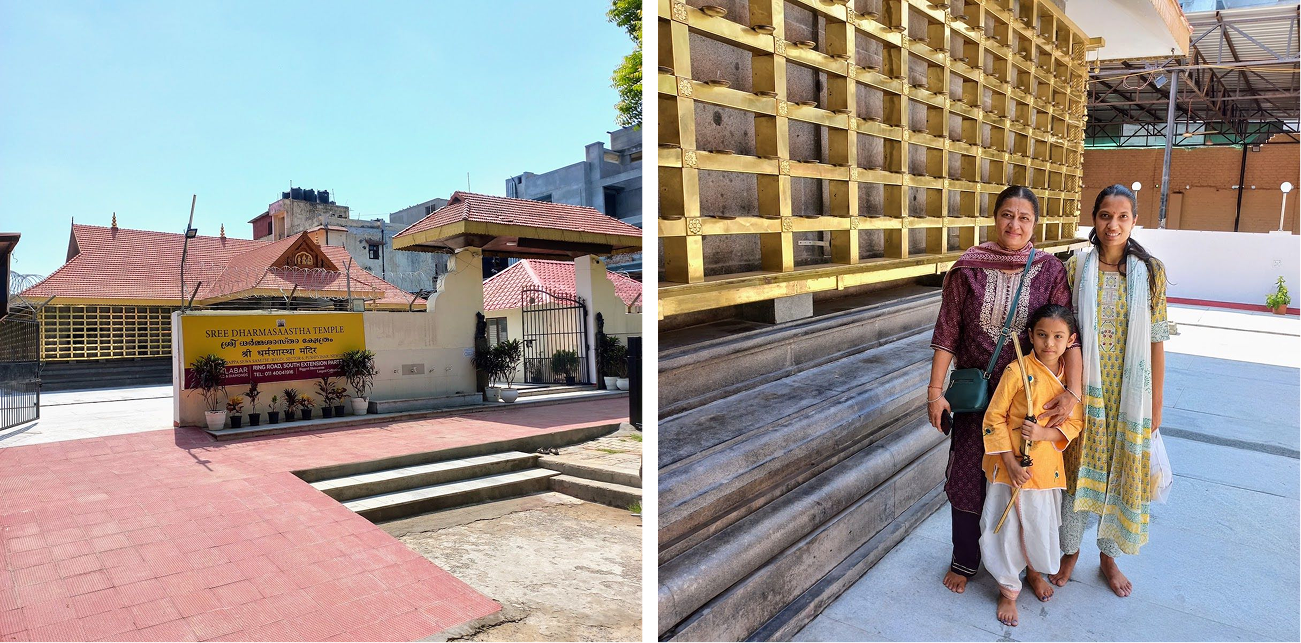
Sabi being Sabi, decided to wear her Gujarati Shreenathji clothes and carried a bow and arrow to the temple.
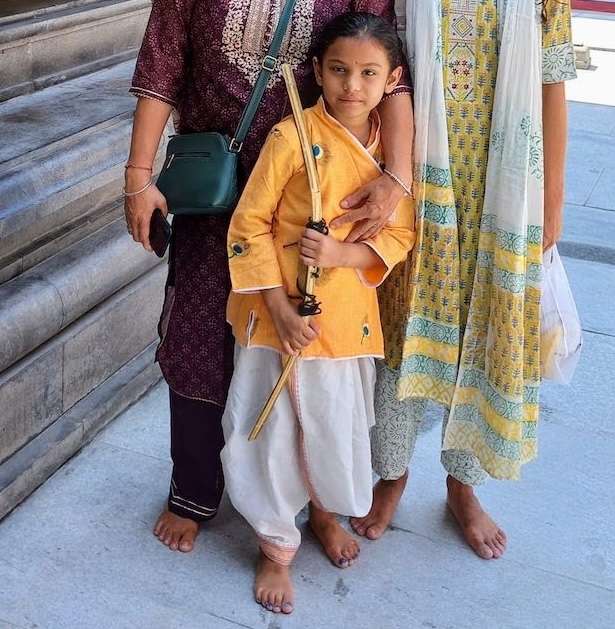
 1
1 Copied
CopiedOur Daughter’s Journey
Reading. We prioritized reading and comprehension from a young age, exposing her to diverse ideas.
- How to Foster an Affinity for Reading in Toddlers (Age 1-3)
- How To Develop a Reading Habit for Children (Age 5-8)

Expressing ideas. She began doodling at three and since then has progressed to writing.
Sticking to one thing. Over the years, she has tried out many things. But she’s shown a commitment to learning Seido Karate from her Guru (Kyoshi), teaching her the value of perseverance.
Habit. Religious symbols became a part of her daily life as she tended to a Shiva Linga (from father’s side) and Parshwanath (from mother’s side) amidst her 15-year old Banyan Bonsai trees.
How to we introduced Religion
Applying it towards a goal
Over the last two years, we have gradually built Sabi’s physical strength. We started with long walks on weekends, 2000 steps initially, and now at least 10,000 steps. 10,000 steps. Over time, we have trained her to run three repetitions of 4-minute runs. We then enrolled her in karate and physical training.
She is increasingly approaching the age that we can introduce strength training.
So we started training her with Mudgars or Hanuman Gadas (Mace) and with it, the discipline and following of Lord Hanuman. Instead of teaching her to pray to God, we are hoping that she lives it.
Introducing Religious Diversity
In October 2022, we embarked on a 4000 km road trip across multiple states — Delhi, Haryana, Rajasthan, Gujarat, and Madhya Pradesh — to expose her to the essence of various Indic religions.
We explored Shaivism, Shakta traditions, Jainism, Vaishnavism, Pitru Upasana (ancestor worship), and Prakrati Upasana (nature worship), witnessing different facets of India’s religious mosaic. Buddhism was also introduced through a visit to Sanchi’s ruins. Each temple visited prompted discussions and reflections.
To witness Shaivism, we visited:
- The iconic Eklingji which has been the ruling deity of the Mewar Royal Family since 700 AD.
- We further covered three Jyotirlings: Somnath on the Gujarat coast, Omkareshwar on the banks of the Narmada, and finally Mahakaleshwar in the ancient city of Ujjain.
To experience the Shakta tradition:
- Our toughest climb was to up the Girnar Hill in Gujarat. Six-year-old climbed up 5000+ steep steps to reach the Ambaji temple.
- We covered three Shakti Peeths (more on them later). The first one was a 1000 step climb up to visit the Ambaji temple, Gujarat. The second one was a Mahakali temple right next to Somnath. The third one is the Harsiddhi temple in Ujjain.
To introduce Jainism, we:
- Hiked 3500 steps up to the Jain temple of Adinath on top of Palitana Hill.
- And on the climb up to the Girnar Hill, we visited the Jain temple of Neminath.
For Vaishnavism, we visited Shrinathji, Nathdwara in Rajasthan. This temple is generally prayed to by traders and business people.
For ancestor worship, we stopped by our ancestral villages to meet great-grandparents who were four generations apart both on her mother’s and father’s sides.
For nature worship, we witnessed the Narmada Aarti i.e. prayer being offered to the river Narmada.
Finally, for Buddhism, we visited the ruins at Sanchi.
We missed visiting Sikhism spots. That we intend to cover in a future trip.
Realize the connection
Our journey highlighted the interconnectedness of Shiva, Shakti, and other deities. More broadly, it showcased the connection of these beliefs to the Indian subcontinent’s geography.
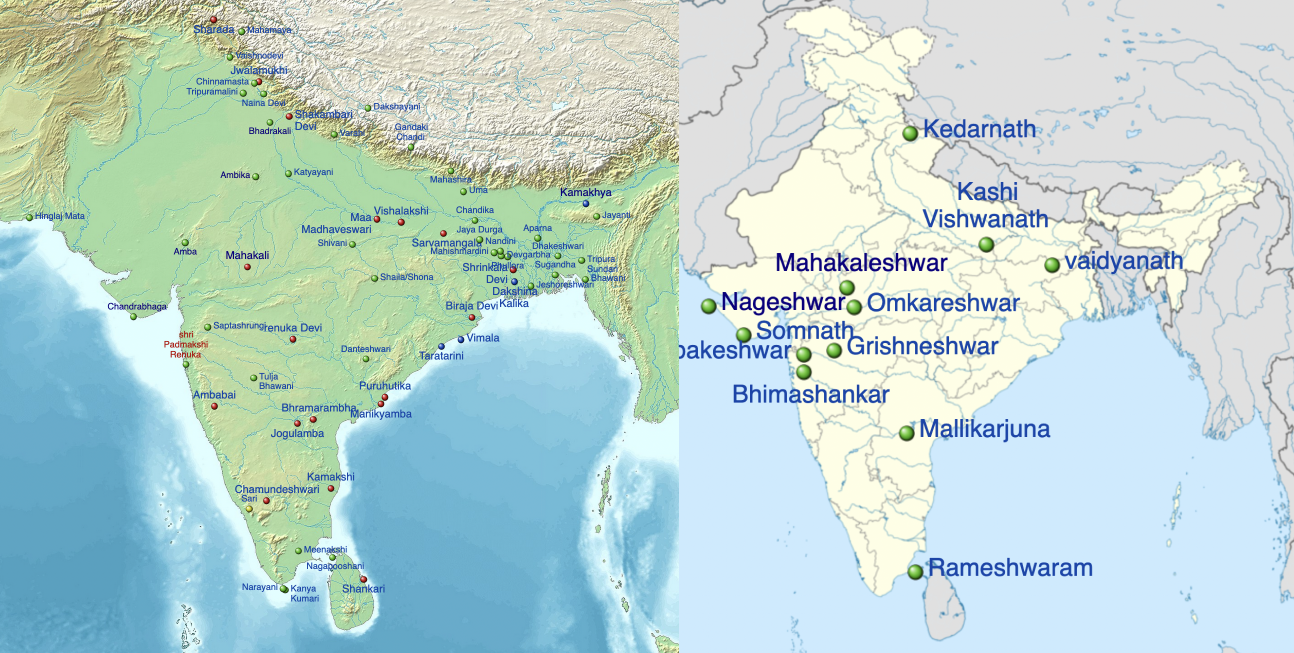
More fundamentally, our existence is deeply intertwined with this land. Yes, the Indian subcontinent might not have existed in the form of a modern nation-state or as one empire. But the belief system is spread across this land and this land alone.
- The spots that Ram and the Pandavas took during their respective exile spanned across this same geography.
- Spread across South Asia (India, Pakistan, Bangladesh, Nepal, Sri Lanka, and Tibet), are 51 Shakti Peeth temples that are associated with the #Shaktism tradition of Hinduism. (image to the left below)
- The 12 major Shiva temples called Jyotirling are spread across this land. (image to the right below)
Acknowledge the past
We acknowledged the historical context, noting how thousands of temples had been destroyed in the past by Islamic invaders and rulers, sometimes for the iconoclasm that their religion asks for, sometimes to humiliate Hindus, and other times to loot. It is a reality that she should know.
Sabi considered selling books to teach children her age about Indic religions. We helped her create a polished edition over a month in a scrapbook. She was pleased, but saw the challenge of hand-making many books. So, she shelved the plan.
 1
1 Copied
CopiedFuture Steps
Our religious journey continues. Our focus remains on practical learning, like her Gada training. Should she choose another discipline, like Kalaripayattu, her focus might shift to other deities.


